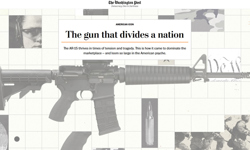In one camp is the “old media” personified by Rupert Murdoch building his paywall around the online content of The Times and the Sunday Times. The wall finally went up on July 2 with access set at £1 per day, or £2 per week.
In the other camp is the “new media” which believes that the internet should be open to all and is personified by the Guardian’s editor-in-chief Alan Rusbridger who, giving the Hugh Cudlipp lecture in January, said, "If you erect a universal paywall around your content then it follows you are turning away from a world of openly shared content."
On the eve of the paywall going up at the Sunday Times, Richard Woods argued the case for payment. In an article headlined: 'Why a free press is worth paying for,' he wrote: "Online, you can shovel out celebrity pap and press releases for virtually nothing. But properly informed reporting, analysis, investigations and the sharpest wit will cost money.”
Although you can divide the camps into two ideologies - the “openists” versus the “wallists” it is not really that simple. I think many journalists have a foot in each camp. They love the openness of the net for the sources and opportunities it brings as well as enabling their material to be read all over the world. But they know their profession is in a deep financial crisis which has led to hundreds of journalists being thrown out of work as advertising is lost to the web and would welcome any sign that the public would pay for online news.
The other part of the story that is not simple is how will we tell which side has won? The Times quite smartly accepts that it will lose lots of its online traffic. Times’ executive editor Daniel Finkelstein, in an interview in The Australian, has said: "It is fantastically too early to judge the project a success or failure. All we can say is that we are hitting our targets and remain optimistic. Of course, numbers of readers on the site have fallen dramatically. We weren't going to have 20 million subscribers. The entire basis of the plan is rooted in the idea that the site will have vastly fewer readers, but infinitely more paying customers. And it does."
It is known that The Times online traffic fell significantly when it was still free and users were asked to register, but otherwise the great paywall debate is short on facts so far. We will probably remain in a phoney war until The Times and Sunday Times reveal how many online subscribers have signed up.
The likelihood is that both “camps” will claim victory. The Times by showing it has gained useful revenue from online news while its rivals will boast about having more online users than ever before.










